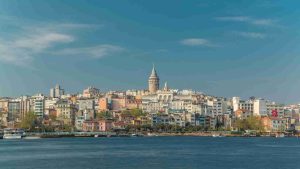The Istanbul Archaeological Museums join a very rich list of museums of this type in Turkey. It is difficult to say which is the most important, as each one treasures authentic jewels from the past of this country. For example, the Museum of Anatolian Civilizations is a reference institution in the capital, Ankara, especially for its connection to the Hittite civilization and Çatalhöyük. Or the magnificent archaeological museums linked to specific sites, such as Troy or Selçuk (Ephesus).
In addition, the Istanbul Archaeological Museums have significant “competition” within the city, as there are other museums and monuments that attract even more attention, such as the mosques, Topkapi Palace, or the Galata Tower. However, history lovers will enjoy a visit to this site, of which we give you more details below.
Istanbul Archaeological Museums: What and where They Are
As we said in the title, it is necessary to talk about Istanbul archaeological museums, in plural, as this name encompasses three specialized museums in certain periods and aspects of the past. They are the following:
- Archaeology Museum
- Museum of the Ancient Orient
- Tiled Pavilion
In addition, they are very close to each other: they are adjacent to the Topkapi Palace, but these are different visits and different sites. Furthermore, the Istanbul Archaeological Museums occupy three different buildings, although attached to each other. The largest, without a doubt, is the Archaeology Museum, while the Tiled Pavilion is the smallest.
At the time of writing this article (July 2025), the Museum of the Ancient Orient was undergoing a major renovation, so it will attract our attention again in the future. And the Tiled Pavilion also deserves a separate post, given the rich and colorful collection of this Turkish craft. Therefore, below we make a brief mention of the Archaeology Museum.
Archaeology Museum: Main Pieces
It is important to perceive this subtle nuance in the name: “Istanbul Archaeological Museums” (the three mentioned) is not the same as “Archaeology Museum” (one of them, the largest and perhaps most important). This space exhibits numerous and important pieces recovered in territories of the Ottoman Empire, in the early days of modern archeology and when that political entity still existed (19th and early 20th centuries). One of the great architects of this museum was Osman Hamdi Bey, director of the institution in 1881 and responsible for numerous excavations throughout the empire.
That is why one of its great attractions is the collection of sarcophagi from the royal necropolis of Sidon, in present-day Lebanon. In particular, the so-called Alexander Sarcophagus, which is named for its reliefs on Alexander the Great. Its state of conservation is extraordinary, which allows us to admire the skill of the Hellenistic artists of the 4th century BC when making them in Pentelic marble, although it is known that they were polychrome.
The Sidamara Sarcophagus has little to envy from the previous one: made in the 3rd century AD and from Konya (ancient Roman Iconium), where the meticulousness of clothing and bodies is truly masterful. And the same goes for the phenomenal Sarcophagus of the Weepers, named for representing these women in attitudes of sadness, which reinforce the solemn character of said sarcophagus.
In other rooms, the collection shows Roman and Byzantine mosaic pavements, as well as architectural remains of civilizations of Anatolia in Antiquity, such as Bithynia. However, due to the restructuring process of the Museum of the Ancient Orient, the distribution of the pieces in the rooms may vary in the future, changing location.



